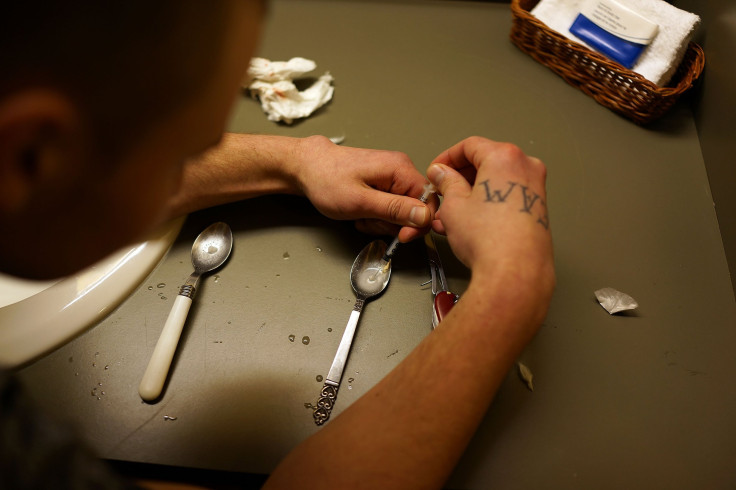White House To Unveil $2.5M Effort Across 15 States To Fight Rise In Heroin Use

The White House wants to refocus the fight against heroin addiction to combine the strengths of both law enforcement and public health officials to winnow out suppliers and extend help to users. In its initial phase, the program will debut in 15 states on the East Coast for one year with $2.5 million in support from the White House Office of National Drug Control Policy.
This collaborative approach, to be unveiled Monday, represents a turn from traditional anti-addiction efforts, which have largely focused on prosecuting offenders. It works like this: A team of 15 health policy analysts will track data on heroin in areas where usage is on the rise and feed that information to 15 law enforcement officials who are working in those districts. Those officers will in turn be able to more quickly grasp how heroin is spreading within the community and narrow their efforts to stop it.
Currently, granular street-level information on drug use is collected by public health agencies but not immediately made available to law enforcement. That delay impedes efforts to track down the primary sources of heroin within a region -- whether that be a specific dealer, a house or a neighborhood.
In addition, a regional health coordinator will oversee efforts to curb drug use in problem areas, and nearby first responders will receive training in administering a medicine known as naloxone that can reverse the effects of an overdose. The Washington Post broke news of the announcement on Sunday night based on reports from two anonymous senior-level sources.
The program's rollout focuses on 15 so-called High Intensity Drug Trafficking Areas. Overall, the U.S. has 28 such areas designated by Congress in 1988 and are privy to extra federal funding for multiagency projects to fight drug abuse and other interventions. These areas encapsulate about 60 percent of the nation's population.
The rate of heroin deaths quadrupled in the U.S. between 2002 and 2013, when about 8,257 people died from overdoses or other consequences of heroin use. In comparison, about 16,000 people died that year from prescription painkiller overdoses. Heroin usage is also increasing and the number of people who said they’d tried heroin in the past year jumped 150 percent to about a half-million people in 2013.
The rise in heroin use is driven largely by people between the ages of 18 and 25. Though once considered an urban scourge, heroin has increasingly made its way into suburban and rural communities such as those outside of Chicago and St. Louis.
At the same time, the dangers of heroin have been publicly underscored by the sudden deaths of celebrities such as Philip Seymour Hoffman, who overdosed in his New York apartment in February of 2014.
© Copyright IBTimes 2025. All rights reserved.






















